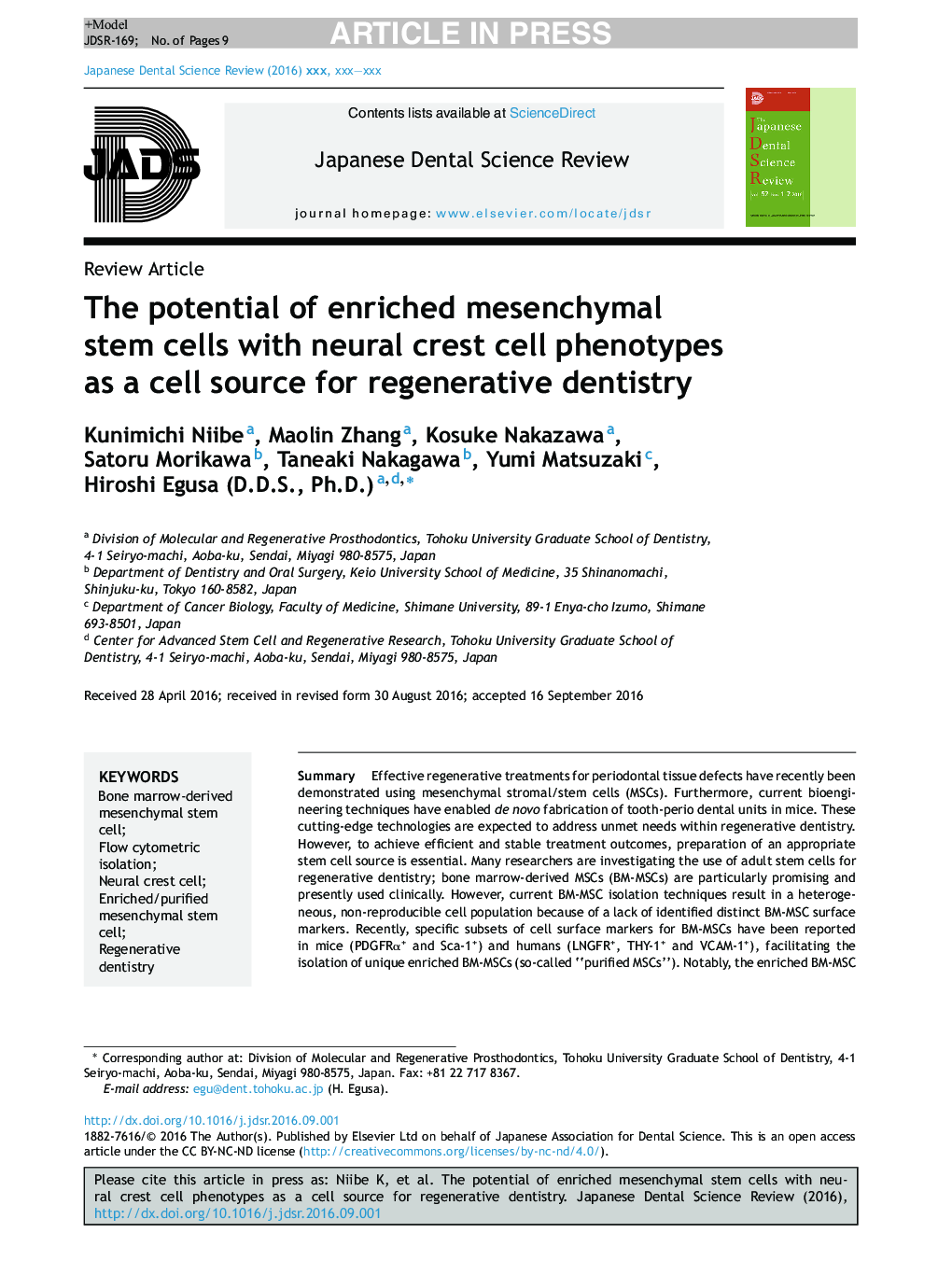| Article ID | Journal | Published Year | Pages | File Type |
|---|---|---|---|---|
| 8698144 | Japanese Dental Science Review | 2017 | 9 Pages |
Abstract
Effective regenerative treatments for periodontal tissue defects have recently been demonstrated using mesenchymal stromal/stem cells (MSCs). Furthermore, current bioengineering techniques have enabled de novo fabrication of tooth-perio dental units in mice. These cutting-edge technologies are expected to address unmet needs within regenerative dentistry. However, to achieve efficient and stable treatment outcomes, preparation of an appropriate stem cell source is essential. Many researchers are investigating the use of adult stem cells for regenerative dentistry; bone marrow-derived MSCs (BM-MSCs) are particularly promising and presently used clinically. However, current BM-MSC isolation techniques result in a heterogeneous, non-reproducible cell population because of a lack of identified distinct BM-MSC surface markers. Recently, specific subsets of cell surface markers for BM-MSCs have been reported in mice (PDGFRα+ and Sca-1+) and humans (LNGFR+, THY-1+ and VCAM-1+), facilitating the isolation of unique enriched BM-MSCs (so-called “purified MSCs”). Notably, the enriched BM-MSC population contains neural crest-derived cells, which can differentiate into cells of neural crest- and mesenchymal lineages. In this review, characteristics of the enriched BM-MSCs are outlined with a focus on their potential application within future regenerative dentistry.
Related Topics
Health Sciences
Medicine and Dentistry
Dentistry, Oral Surgery and Medicine
Authors
Kunimichi Niibe, Maolin Zhang, Kosuke Nakazawa, Satoru Morikawa, Taneaki Nakagawa, Yumi Matsuzaki, Hiroshi D.D.S., Ph.D.,
